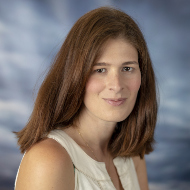That’s just one of the many stories from the Bay Area Science Festival, held from October 25 to November 2, 2019. NCSE participated in five different events, talking to over 800 people. From crawling through intestines on a mission to discover a microbiome strategy for cellulose digestion, to using their best Jenga skills in a family-wide contest of EcoStax, to playing the role of a community member rallying around restoring a dam with environmental improvements, participants were able to understand evolution and climate change in a way that was both nuanced and accessible. Though our weekend events were largely attended by kids with their families, we made sure to also provide activities targeting adults. On October 31, we brought the extra-scary version of Flu vs. You to Manny’s, a San Francisco bar. The average playing time was over 40 minutes, almost unheard of for a science outreach activity anywhere, let alone in San Francisco on Halloween.
Unsurprisingly, we didn’t receive a lot of pushback about teaching evolution and climate change in the Bay Area, though there are many here who harbor the misconception that there is nothing they can do about climate change. However, while the Bay Area is home to some of the most exciting technological discoveries, it also has significant inequity in access and exposure to science. One of the missions of the Bay Area Science Festival is to reach populations that can get left out of traditional science, by making activities free, open to the public, and strategically placed in underserved populations. Gaining access to evidence-based and engaging science early makes students more likely to pursue science careers and think positively about science. Through our work with the Bay Area Science Festival we were able to reach families in our own neighborhood that don’t have frequent opportunities to engage with science.
Gaining these experiences not only helps us feel more connected in our own communities, but also gives us insight for addressing these problems nationwide. People everywhere respond to science that respects their values, recognizes their inherent abilities as scientists, and gives them space to explore on their own. We debuted a prototype for Cool Cities at the North Bay Science Festival in 2018. Our conversations there were the inspiration for revising the activity to make it rooted in the real social and economic problems that a city faces when it tries to be environmentally sustainable. Now a year later, Cool Cities has become one of our most popular activities, and we were proud to bring it to the Bay Area Science Festival’s culminating event at Oracle Park. Similarly, we believe that lessons learned in 2019 will help make our 2020 programs stronger nationwide.
Here are three of our favorite stories from the Bay Area Science Festival:
Younger-than-expected participants turned up at our Flu vs. You event at the Visitacion Valley Public Library event. As a result, we modified the longform of our game and presented the shortform version, designed to help demystify the flu shot and explain herd immunity. Given that role-playing is an especially powerful tool, we volunteered our arms to receive these mock inoculations. We estimate that we received every possible combination of trivalent flu vaccine, some more than once, and many at the same time. We were especially grateful for two volunteers who stepped in to help translate our activity into Chinese.
We noticed that one of our Flu vs. You participants at Manny’s sat down on a couch there and pulled out his cell phone. Initially we were worried, thinking that he had gotten bored and given up on the game. Ten minutes later, however, he approached us and revealed that he had instead been doing research. He had gotten so enthralled by the epidemiological models that we had shared that he had decided to look them up to better engage with the game. He subsequently developed a strong vaccine that was able to stop an emerging pandemic.
A family with a 10-year-old showed up to our Climate Change Summit in Berkeley. Not only was he able to understand and even pick apart some complex data about dam restoration, which was the focus of the summit activity, but he came up to the front and presented the summary for his group’s position. After the final vote was in (which overwhelmingly supported restoring the dam with environmentally sound modifications), he got to help us simulate the impact of the community’s decision using a stream table and the variable rainfall patterns that are predicted under climate change.


